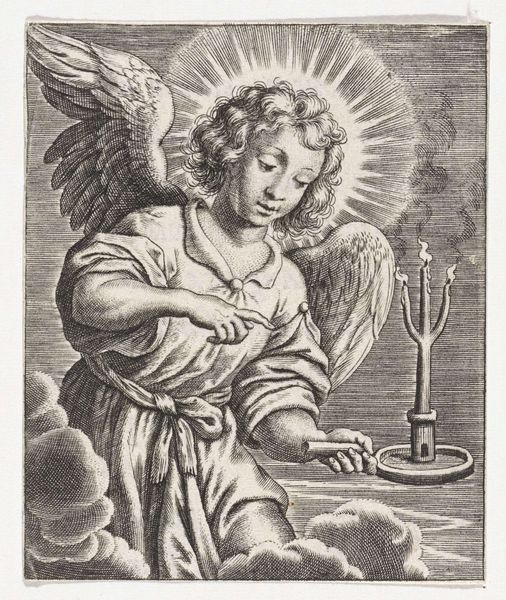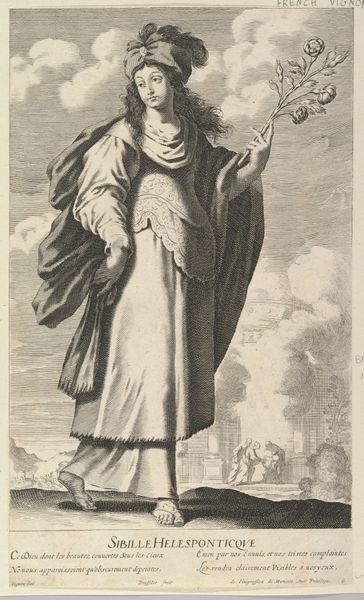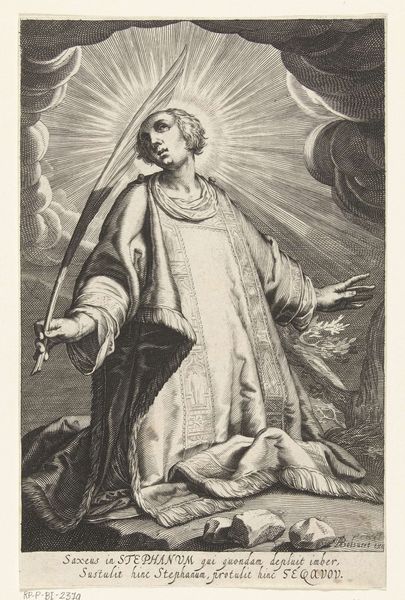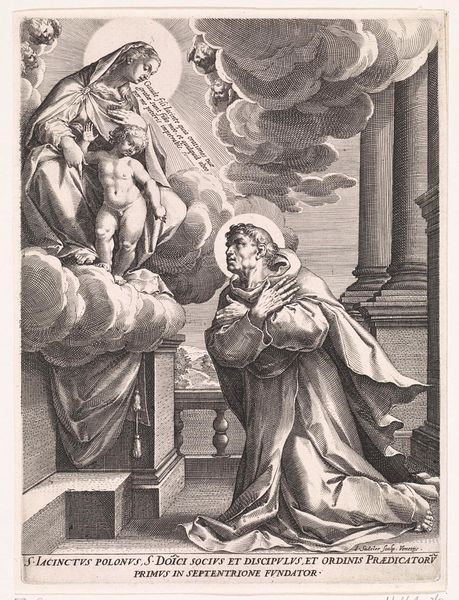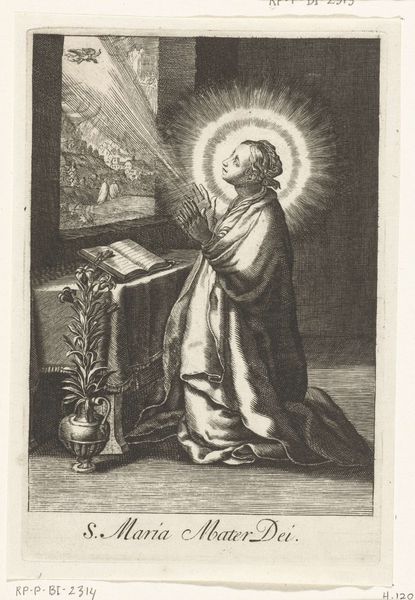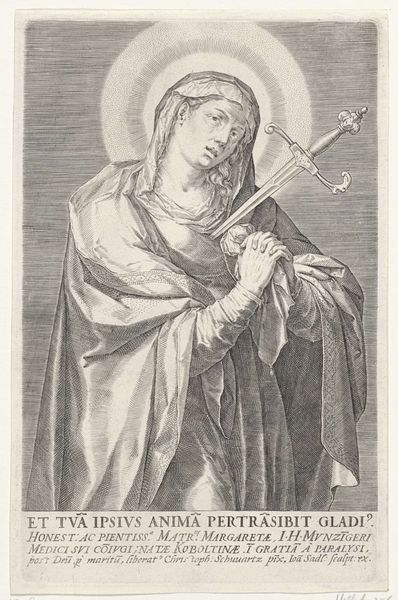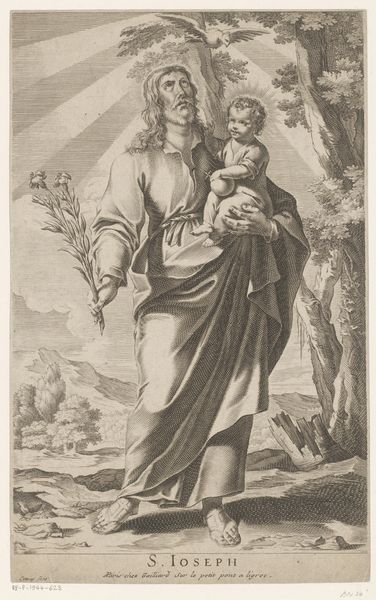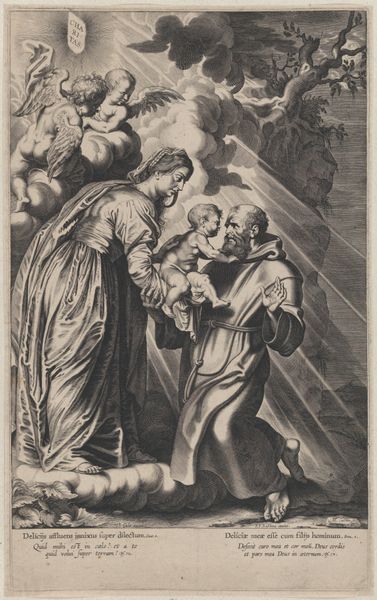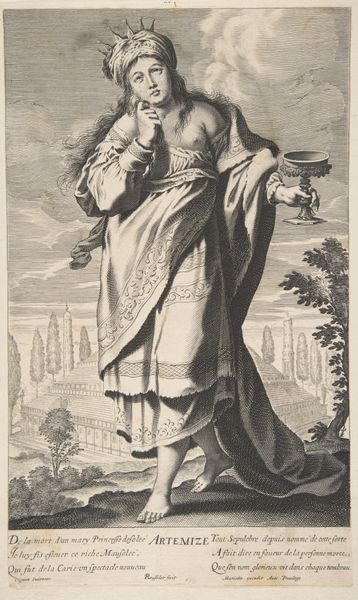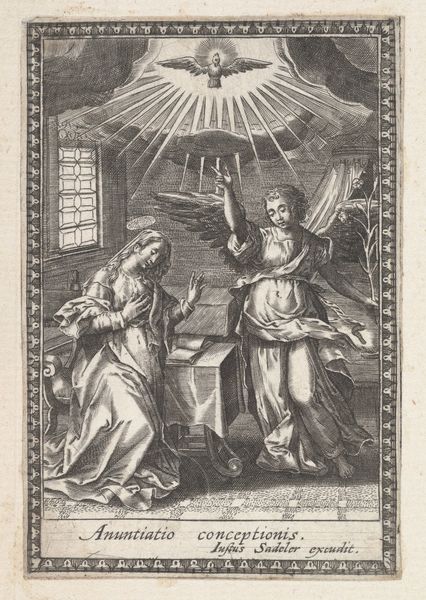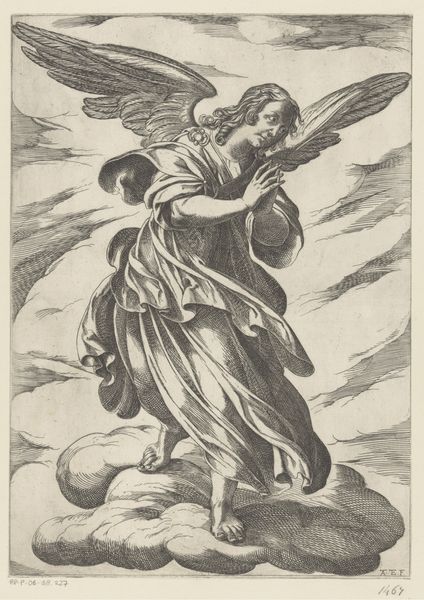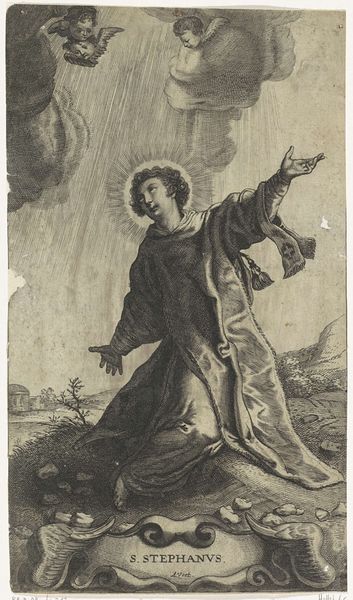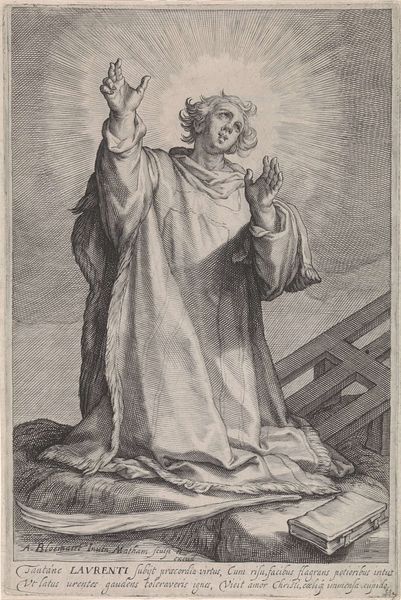
engraving
#
baroque
#
figuration
#
line
#
history-painting
#
engraving
Dimensions: 70 mm (height) x 96 mm (width) (bladmaal)
Curator: This engraving, dating from 1620 to 1670, depicts Jesus as a child, kneeling in what I would call anticipatory prayer. Editor: Immediately striking—there's such a sharp contrast between the almost saccharine softness of the child Jesus and those stark symbols of suffering. Is that an oil lamp behind the cross? Curator: It is. The title, roughly translated, is "Jesusbarnet kneeling before the instruments of the Passion," and all of those objects refer, quite explicitly, to his future torment: the lance, the nails, the crown of thorns, even the inscription on the cross itself. Editor: It's incredibly economical, isn't it? Just black lines on white paper, and yet it manages to be both gruesome and sentimental. Looking closely, you can almost see the hand of the engraver, guided by the artist, meticulously layering those lines to create depth and texture. All this torture is becoming like a manufacturable product. Curator: The artist here manages to convey a sense of childhood innocence confronted with impending doom. The luminous halo clashes with the rather grisly array of objects around him. The background itself feels quite undefined, further placing emphasis on this contrast. Editor: It speaks to a society grappling with violence. Engravings like this would have been relatively accessible; they could be reproduced easily and widely distributed, in a sense democratizing images of intense emotional and spiritual significance. Curator: Very true! And the medium of engraving lends itself particularly well to conveying these stark themes. The crispness of the lines intensifies the drama, leaving little room for ambiguity. Editor: The use of line is very interesting here. In essence it reminds me about Medieval iconography combined with industrialization in the form of multiplied printed artworks. Curator: Seeing this has reminded me of how profoundly material considerations affect meaning and symbolism in religious artwork. Editor: Indeed, and it shows how art, religion, and the means of production can all become deeply entangled in shaping belief and devotion.
Comments
No comments
Be the first to comment and join the conversation on the ultimate creative platform.
